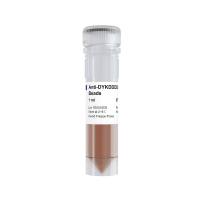Nuclear Magnetic Resonance of Hemoglobins
互联网
414
Nuclear magnetic resonance (NMR) spectroscopy detects the interaction of radiofrequency (rf) radiation with the nuclear spins of molecules placed in an applied magnetic field. Because the spins are sensitive to their environment, and may be coupled to one another both through chemical bonds and through space, NMR can provide a wealth of information on the structure and dynamics of macromolecules. In particular, NMR has proven to be a powerful technique for investigating the structure-function relationship of hemoglobin (Hb). In this chapter, we focus on the procedures involved in applying one-dimensional and two-dimensional NMR spectroscopy to Hb and give examples of the information that may be obtained from this method. We begin with a brief outline of theory; a more complete treatment can be found in several excellent books (1 –8 ). A typical NMR sample may contain approx 3�10−7 mol of Hb, which include ≈1021 hydrogen atoms, each of which has a nucleus (i.e., a proton) with a nuclear spin 1/2. In the presence of an applied magnetic field B 0 , each nucleus will occupy one of two possible energy levels, corresponding to the z -component of the spin being either parallel or antiparallel to B 0 , which conventionally points along the z -axis. At thermal equilibrium, a slight excess (a few parts in 105 ) of spins will occupy the lower energy level and be parallel to B 0 . This small population difference is crucial to the NMR signal resulting from the absorption of rf energy, which excites spins from the lower to the upper energy state.









